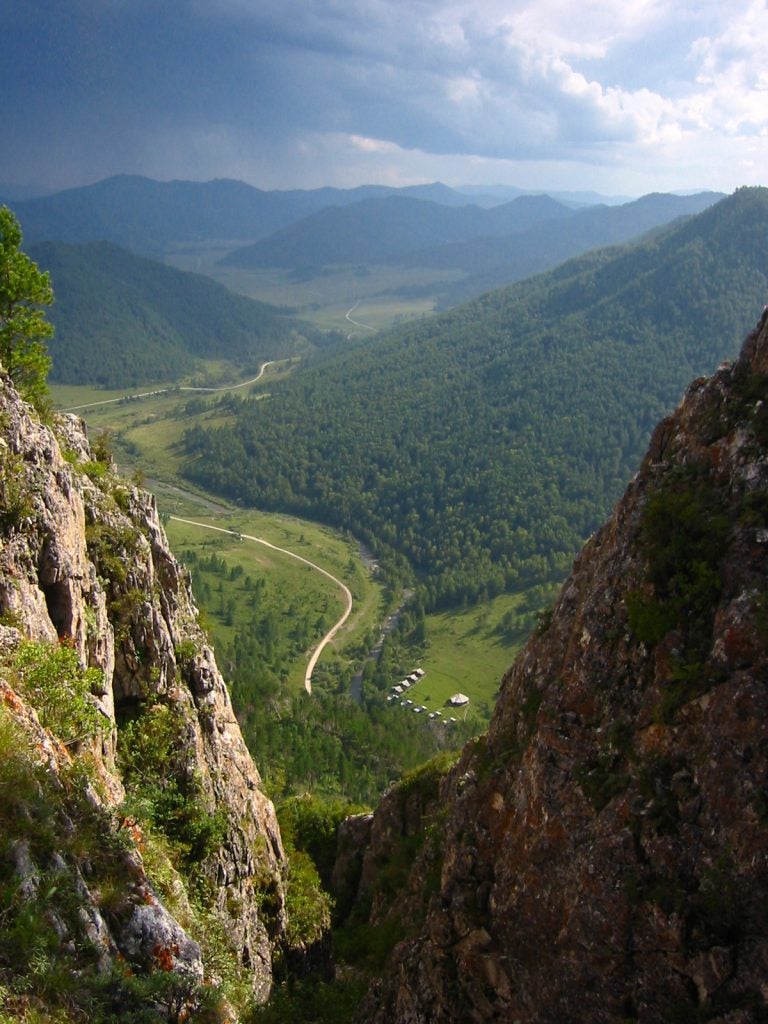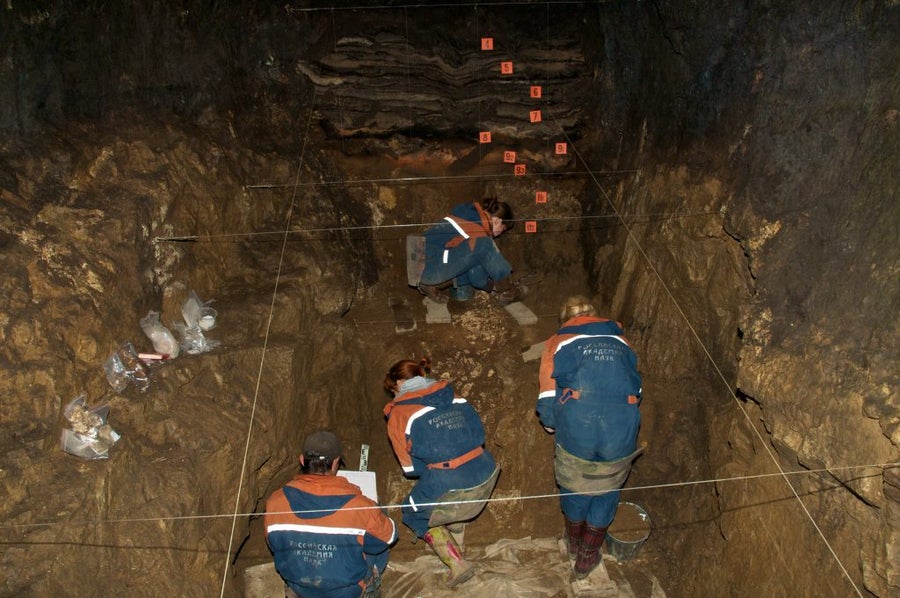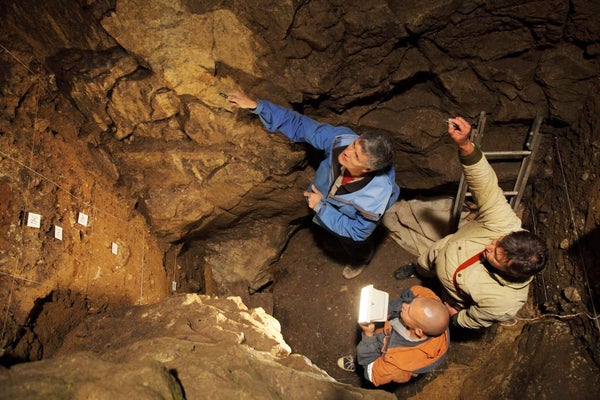In a remarkable twist in the story line of early human evolution, scientists have announced the discovery of “Denisova 11”—a female who was at least 13 years old, lived more than 50,000 years ago and was a child of mixed parentage. Her parents were not just of different races, but two different and now-extinct early human types. Their exact taxonomic designations—whether they were separate species or subspecies—is still a matter of scientific debate. But the bottom line for Denisova 11 is that mom was a Neandertal and dad a Denisovan.
The research, published Wednesday in Nature, is the work of a team led by pioneering paleogeneticist Svante Pääbo at Max Planck Institute for Evolutionary Anthropology in Germany. He and his co-authors published the first description of the Denisovans in 2010, based on genetic evidence from one of the 2,000 or so bone fragments found in Denisova Cave in the Altai Mountains, where Siberia borders Mongolia and China. The new discovery is based on another bone fragment from that lot, a 2.5-centimeter-long fragment of what was a femur or humerus, from which the researchers extracted six DNA samples and then cloned them for detailed analysis.
Molecular dating indicates that Denisovans, who are so far known only from Denisova Cave, and Neandertals, known mainly from sites in Europe, diverged from each other almost 400,000 years ago. They coexisted, probably in relatively small populations scattered across the vast Eurasian landmass, until both became extinct some 30,000 to 40,000 years ago.
On supporting science journalism
If you're enjoying this article, consider supporting our award-winning journalism by subscribing. By purchasing a subscription you are helping to ensure the future of impactful stories about the discoveries and ideas shaping our world today.

View of the valley from above the Denisova Cave archaeological site, Russia. Credit: Bence Viola Max Planck Institute for Evolutionary Anthropology
But the genetic evidence from Denisova 11 and other recent studies suggests that, on the occasions when they met, Denisovans and Neandertals commonly mated with each other—and with modern humans. Denisova 11’s father carried a small amount of Neandertal ancestry, the study notes, from “possibly as far back as 300 to 600 generations before his lifetime.”
Sharon Browning, a statistical geneticist at the University of Washington who was not involved in the research, praises the new study. “I’m really kind of blown away by it,” she says. “Just to catch the offspring of these two different groups is really remarkable.”
“It looks absolutely solid,” adds University of Utah population geneticist Alan Rogers, who also was not part of the work. “I think these guys, as usual, have done a great job.” Asked if Denisova 11 might have simply been the offspring of a mixed Neandertal–Denisovan population—rather than of a mother and father of two such starkly separate backgrounds—Rogers says, “I felt that their analysis made sense. I was convinced by that. It’s not surprising that the two species would mate, if they were together at the same place and time,” he adds. “But I don’t think we knew before now that they were together at the same place and time—and if they were, it raises the question of why they were so different.” That is, why didn’t they evolve into a single species?

Excavation works in the East Chamber of Denisova Cave, Russia. Credit: Bence Viola Max Planck Institute for Evolutionary Anthropology
“It’s a really interesting question,” says Harvard University geneticist David Reich, who did not take part in Pääbo’s study. “At Denisova Cave we are clearly looking at an area where these two groups washed across one another, within walking distance of the cave. But there must have been a lot of isolation, as well as mixture.” The hybrid offspring from such divergent populations, Reich says, may have experienced biological problems. Or they may have faced cultural bias, Pääbo notes, if people of mixed backgrounds were “not very well accepted in the cultures of that time.”
Even so, both Neandertals and Denisovans have persisted in the modern human genome. A small percentage of Neandertal ancestry is common in all modern human populations outside Africa; some Denisovan lineage is also common among people from east Asia and Oceania. Earlier this year a study led by Browning indicated the modern Denisovan inheritance derives from at least two separate populations, suggesting they were once dispersed far beyond the Denisova Cave. Pääbo says the next step for his laboratory will be extracting DNA from sediment in the Denisova Cave floors to determine “just when Neandertals were there, when Denisovans were there and when both were there together.”
The dream that scientists could document such interactions in the prehistory of humankind “used to seem impossible,” Reich says. “But now we are getting to witness the dream.”
